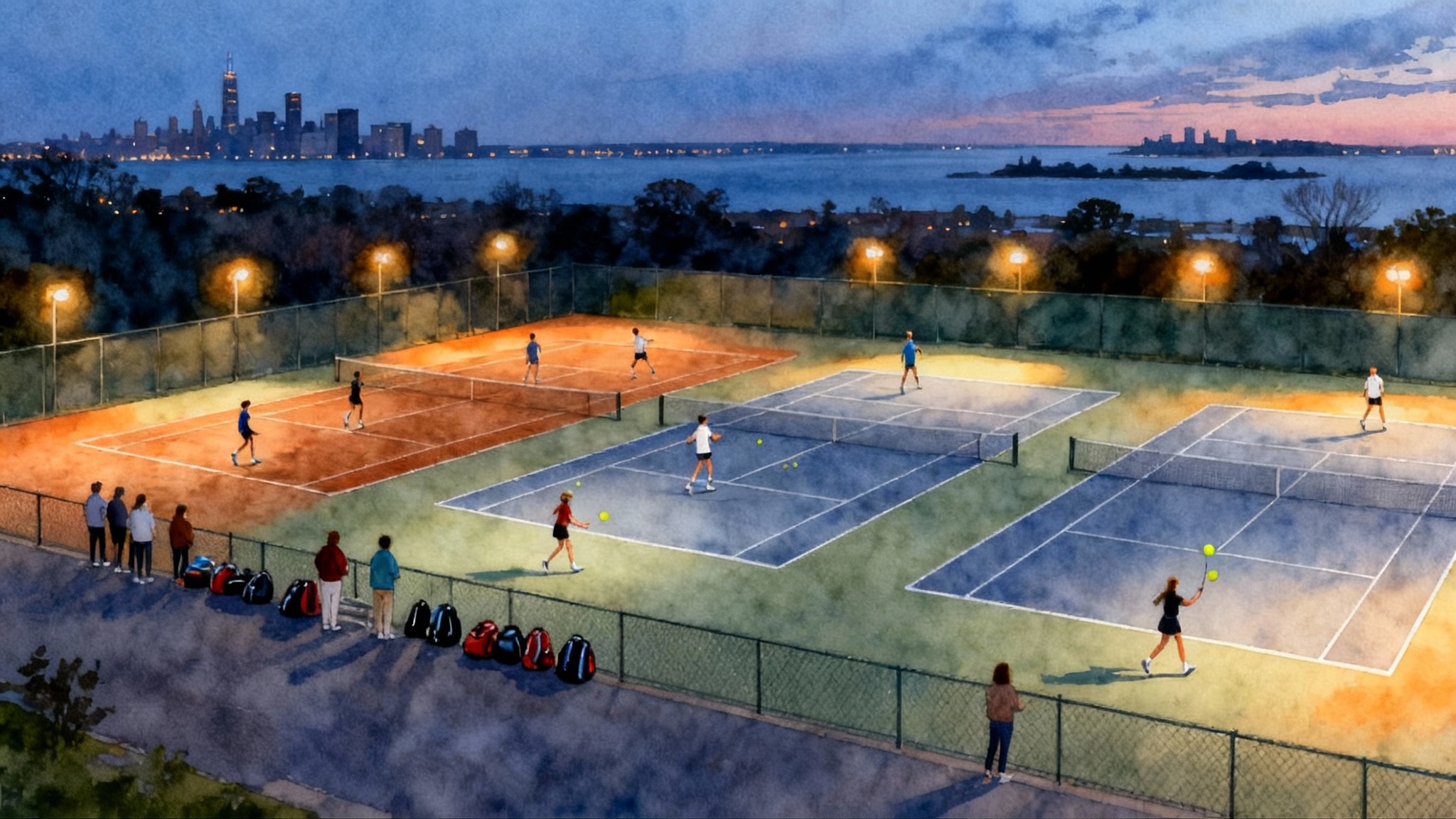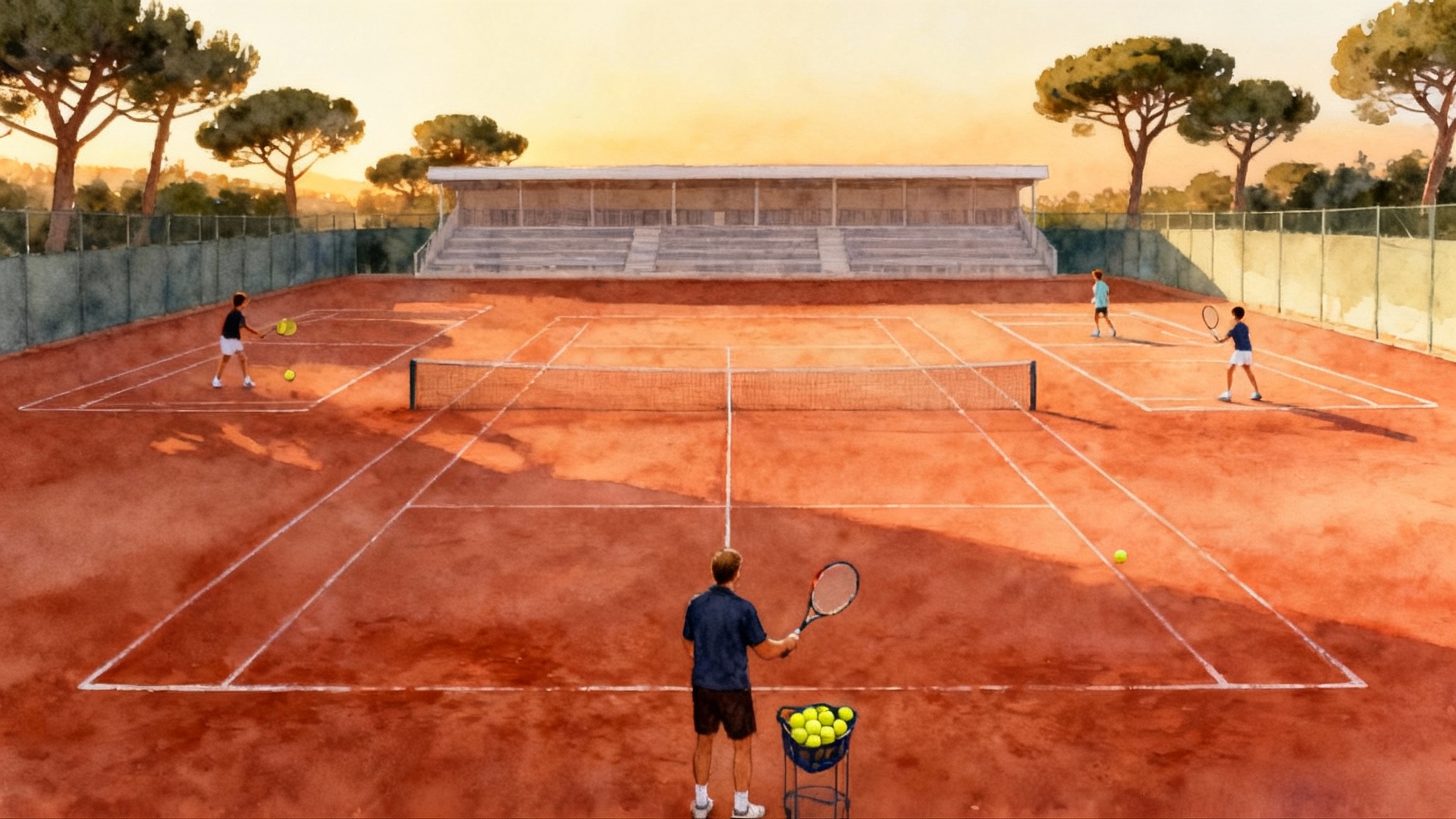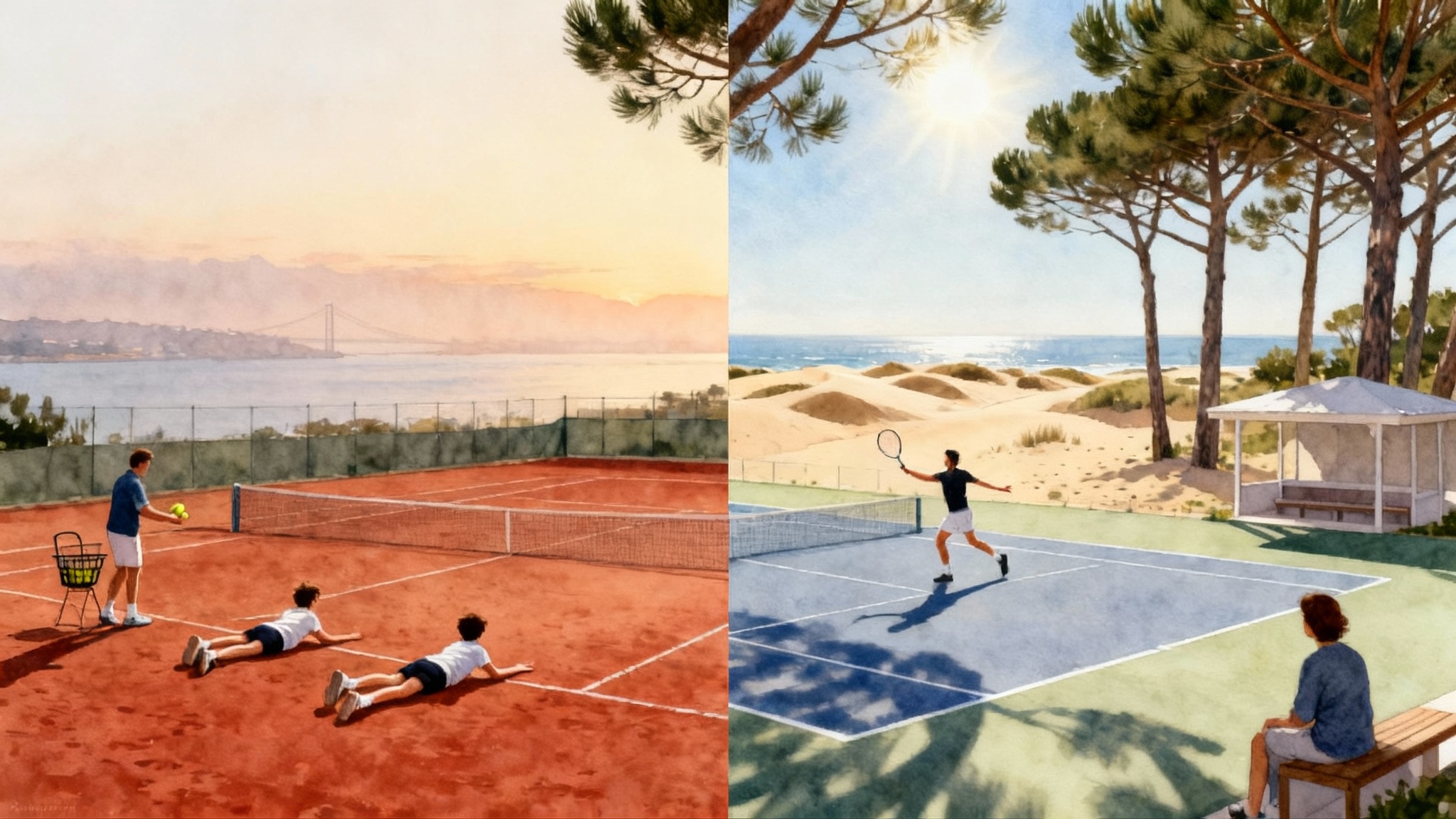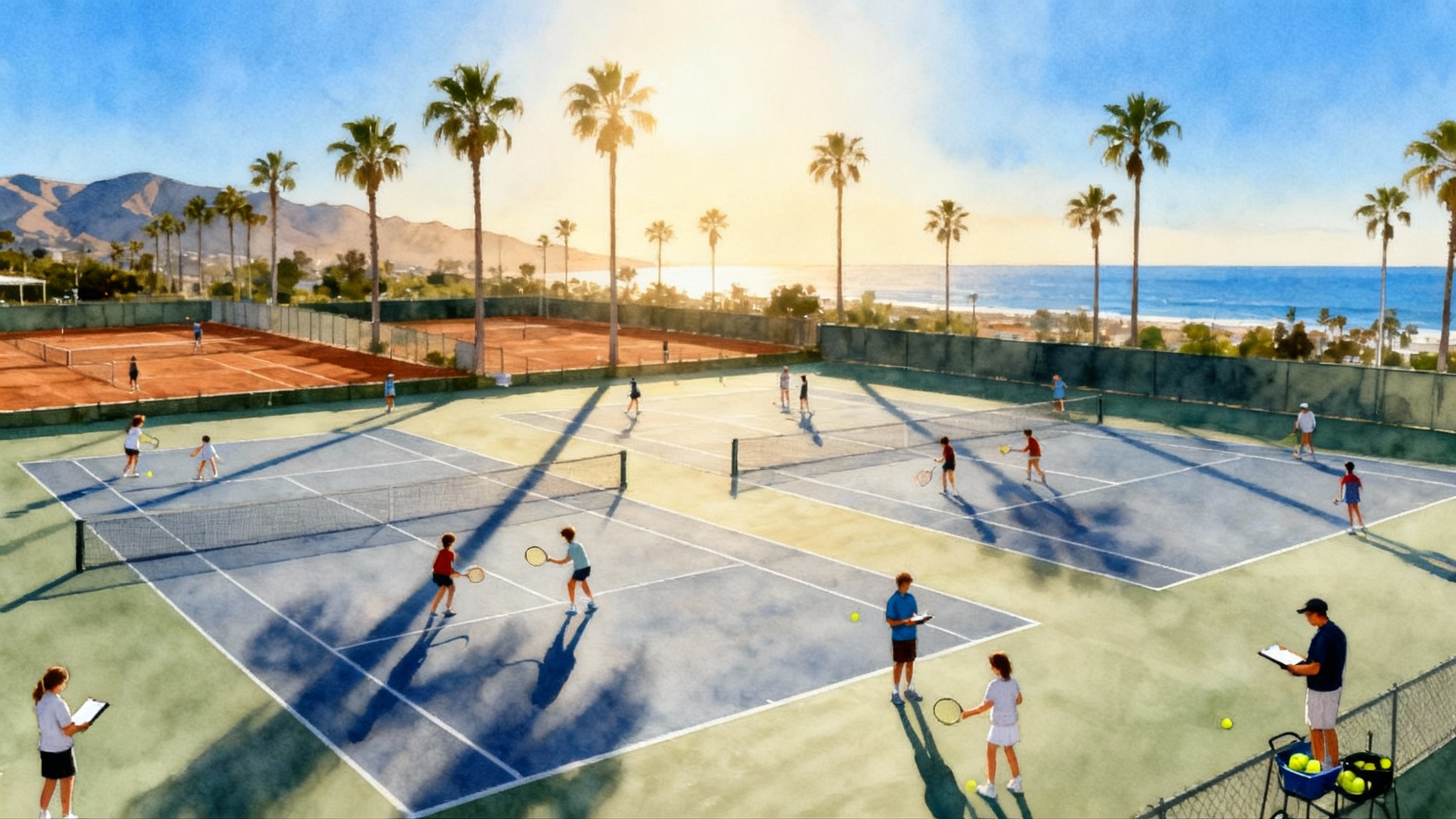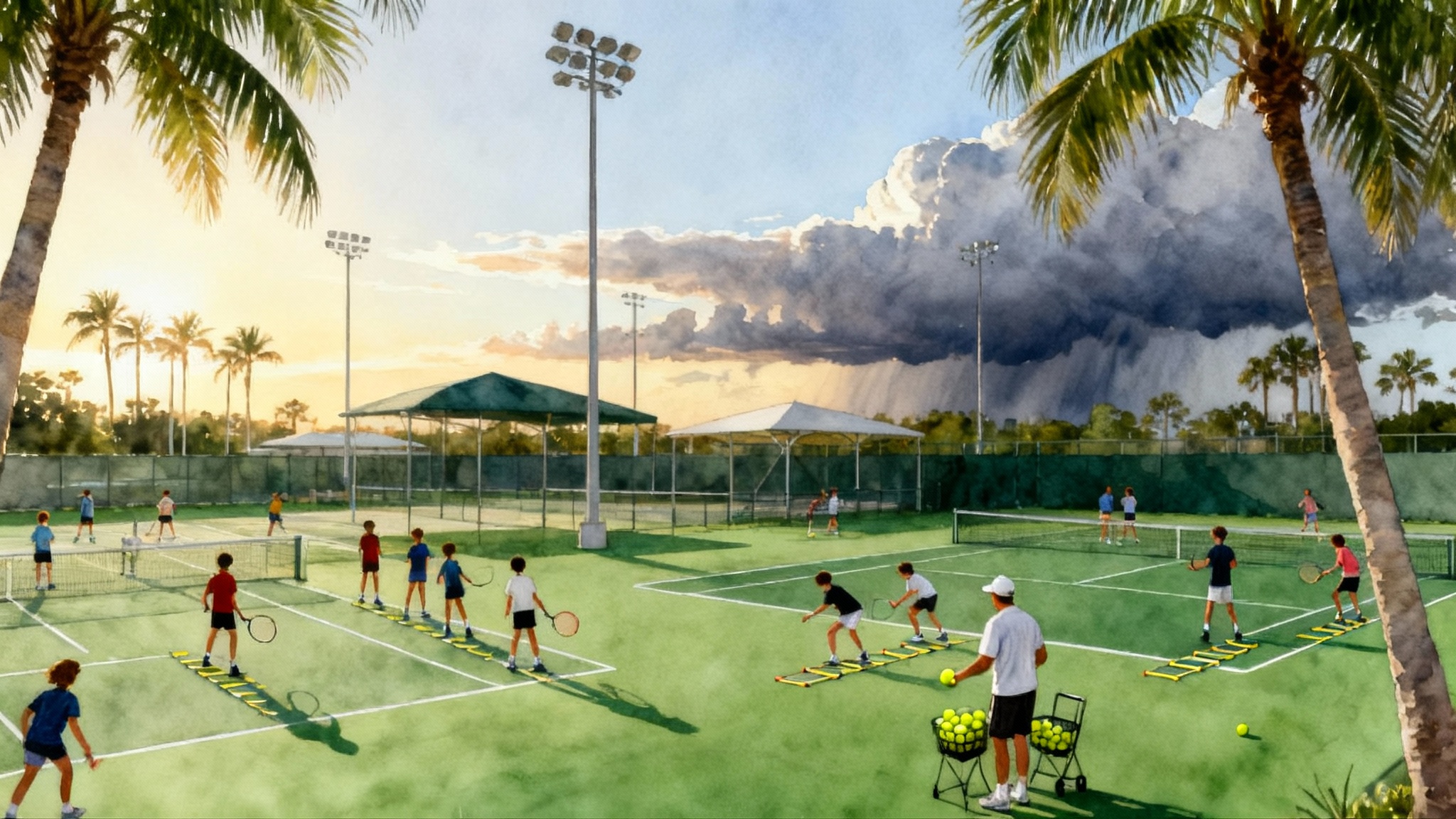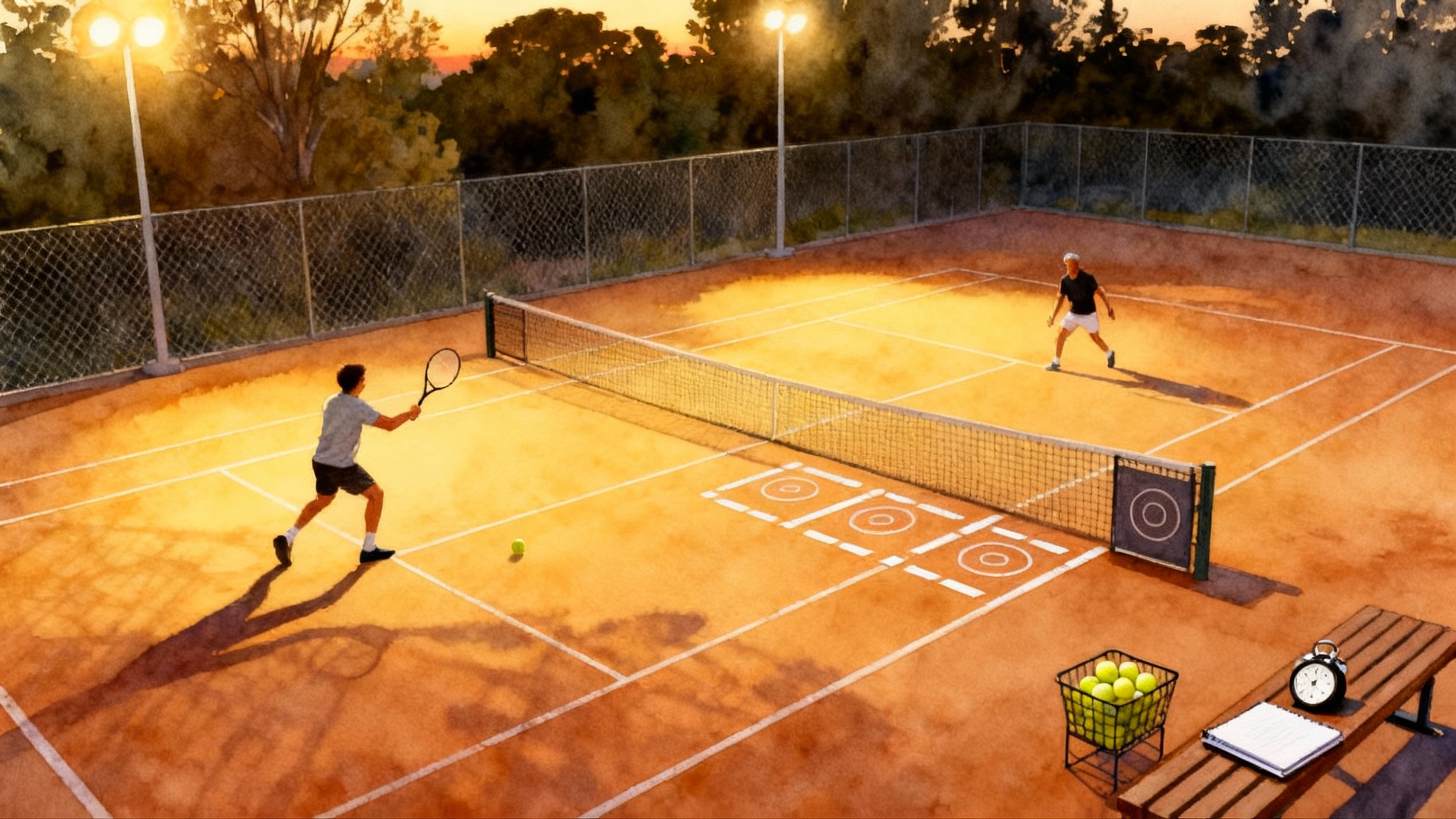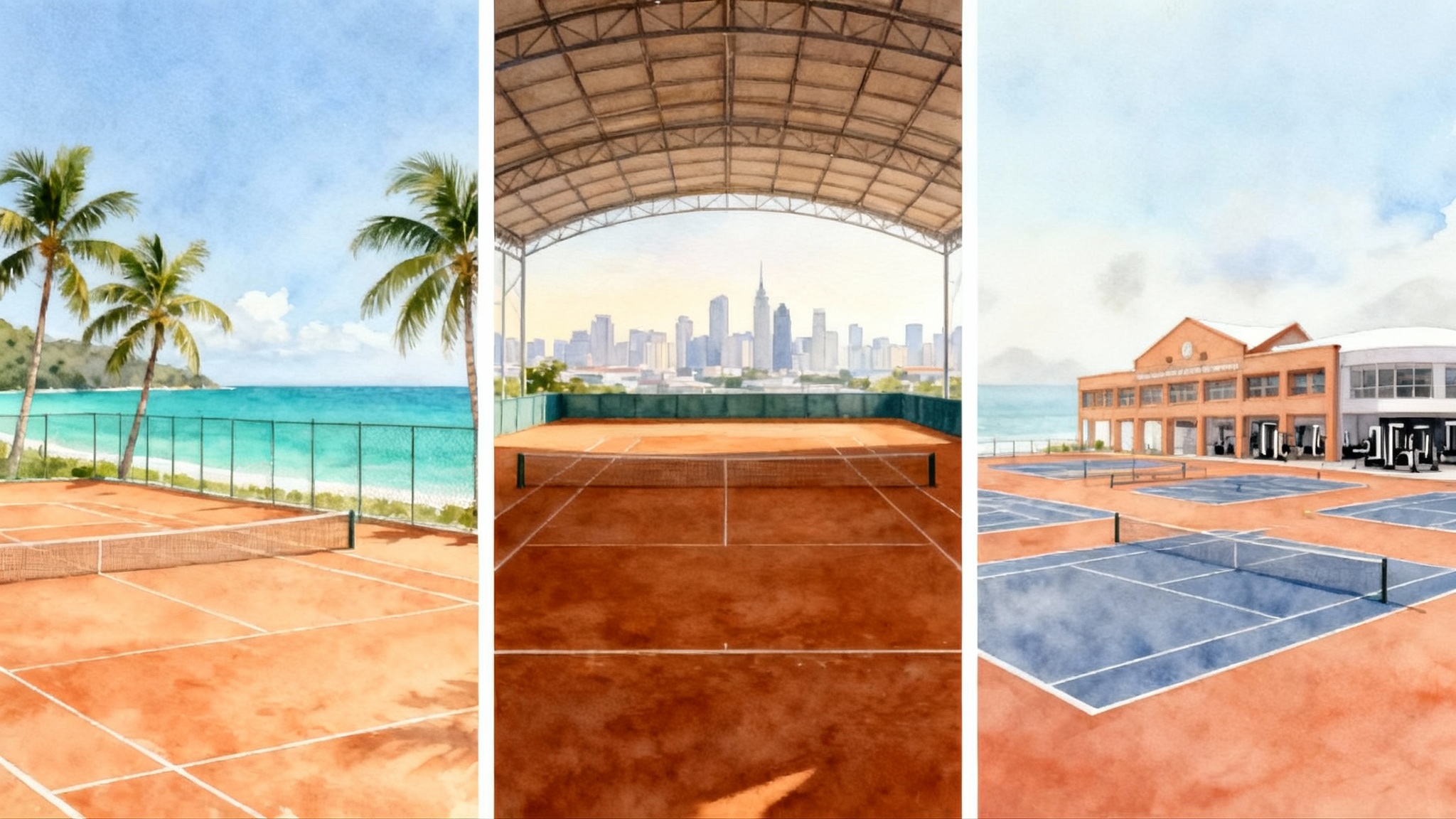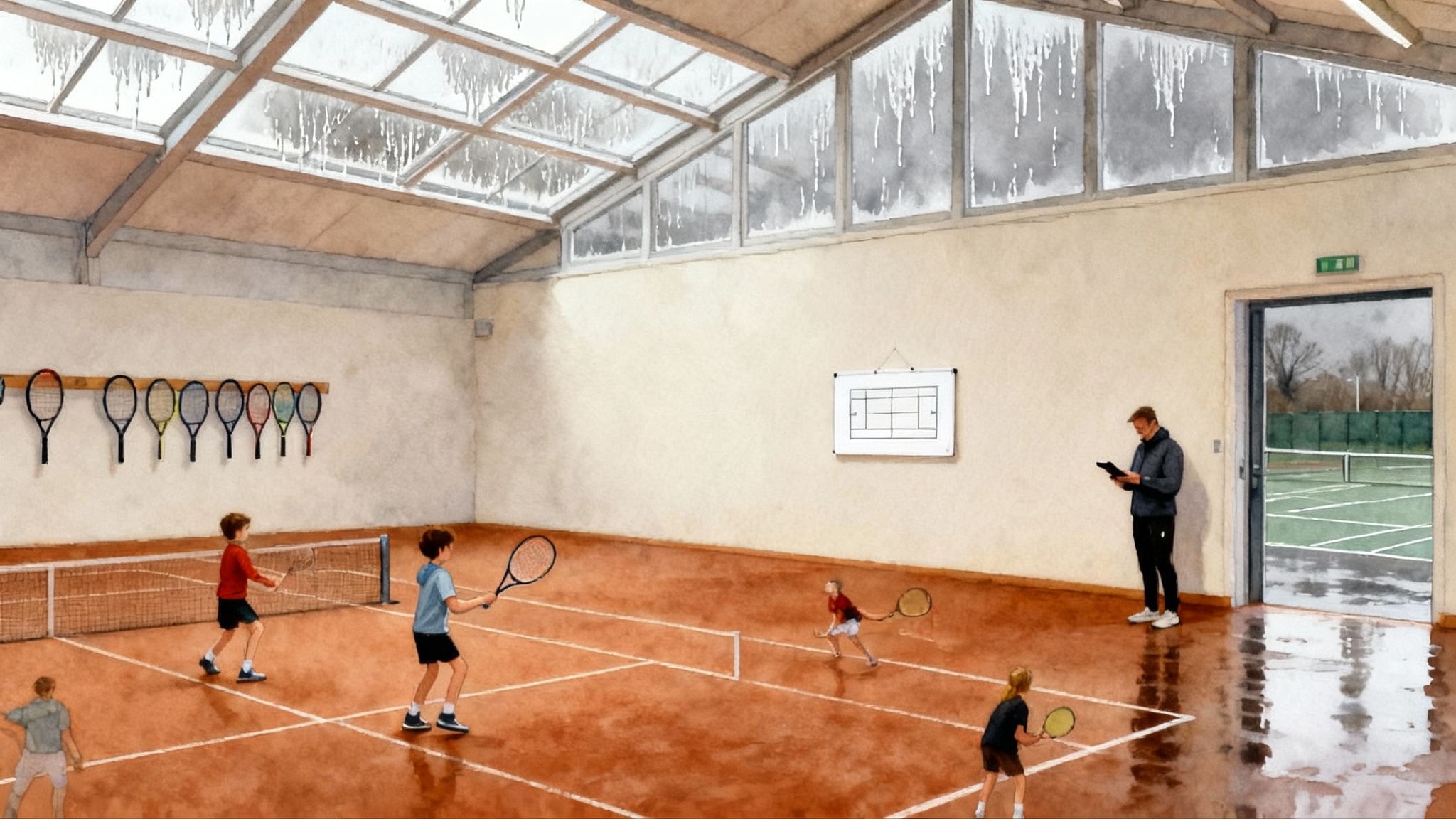Best UK Tennis Academies 2025–2026: London to Bath
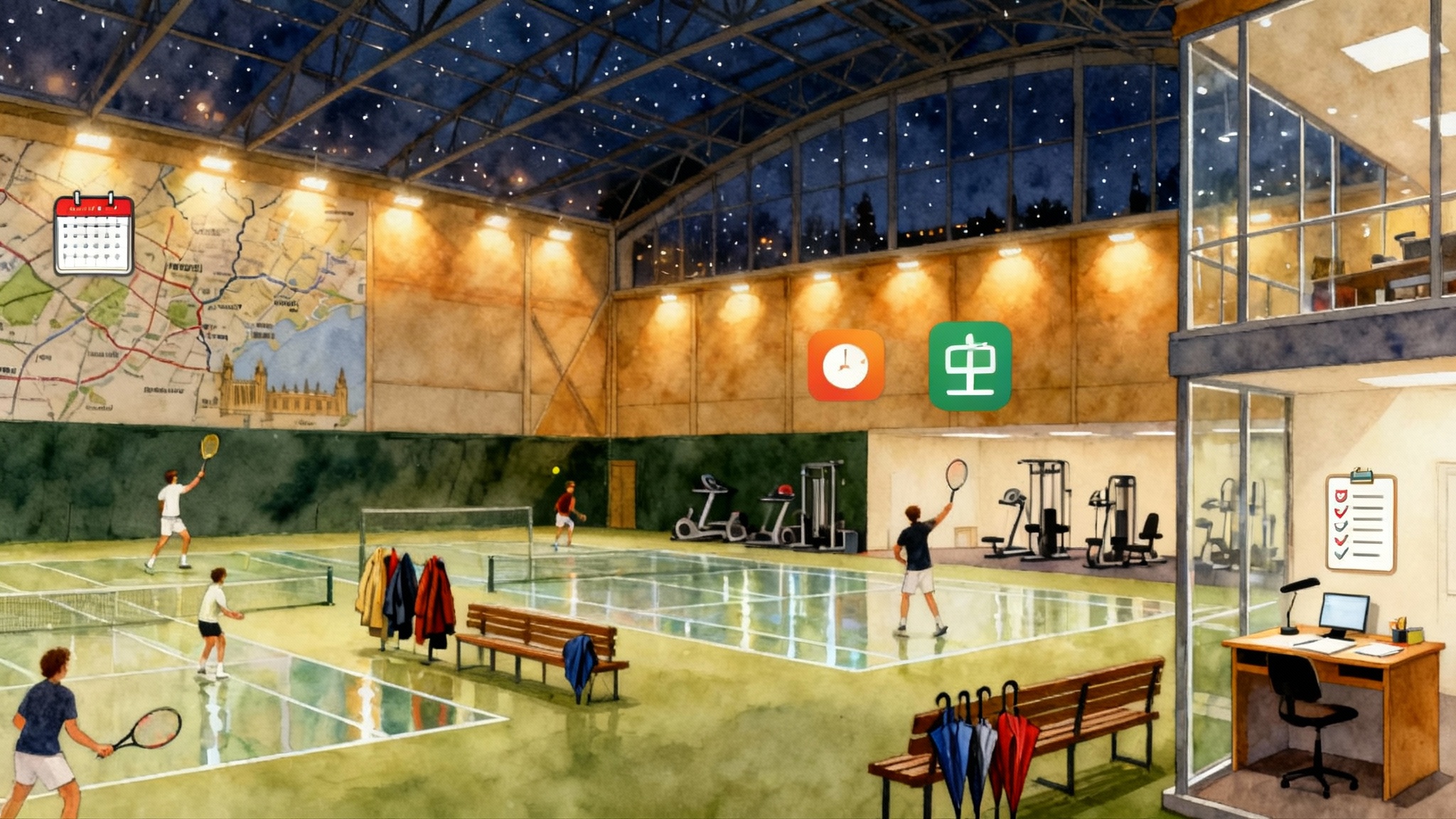
How to use this winter-ready guide
Cold, wet months make or break a junior season in Britain. Indoors decides whether repetitions continue when daylight fades by 4 p.m., and whether a player arrives in April ready to compete rather than to rebuild. This guide helps families compare five proven hubs in and around the London to Bath corridor: Sutton Tennis Academy, Bromley Tennis Centre, Team Bath, Gosling Sports Park and Halton Tennis Centre. We focus on what matters from November to March, then show you how to run a smart trial day, read coaching ratios, budget with confidence and pick an environment that fits your child’s goals and your family’s life.
Where we reference the national pathway, we point to the Lawn Tennis Association player pathway to anchor terminology and competition stages. Later, when we touch on Team Bath’s broader environment, we reference the Team Bath Tennis performance programme. If you are considering a February top-up in the sun, see our Best Portugal Tennis Academies guide for options a short flight from the UK.
What matters most between November and March
Think of winter tennis success as a three-legged stool. If any leg is short, the whole plan wobbles.
- Indoor and clay volume: Indoors is the ceiling on your training hours. Clay, even in winter, increases ball tolerance, shape and physical robustness if maintained well. Ask for the weekly indoor court allocation that a performance player will actually receive, not the total courts the venue owns.
- Footwork methodology: Footwork language must be consistent and repeatable. Good academies can explain their patterns in simple phrases, for example split step timing, first two steps, recovery lanes and stance choices. You are buying a movement curriculum, not just baskets of balls.
- Coaching ratios and coach time: In winter, squads can swell. Ratios of two or three players per coach for performance squads are typical for quality work. Privates are still vital, but squads should deliver most of the volume.
- Academic integration: For GCSE and A-level years, you need timetable flexibility, supervised study and clear communication between coaches and school leads. Evidence matters: attendance tracking and grade monitoring should be routine.
- Competition access: You want a predictable pipeline of Universal Tennis Rating events, called UTR, and Lawn Tennis Association grade events. International Tennis Federation juniors and entry-level professional events on site are a bonus, especially for older teens.
- Budget transparency: Winter drives indoor costs. Clarify base squad fees, indoor court surcharges, private lesson rates, strength and conditioning, physio and tournament travel. Push for a written, term-by-term total.
Quick-compare matrix: London, Surrey, Bath and beyond
Below is a structured, plain-English matrix. It uses relative levels because specific court counts and fees can change term to term. Use it to shortlist two sites for trials.
Sutton Tennis Academy, London
- Indoor and clay volume: Indoors high in winter; clay access moderate with maintenance dependent on weather. Winter squads prioritise indoor rotations.
- Footwork methodology: Emphasis on first-step speed, open-stance baseline patterns and neutral stance on approach balls. Good use of repetition blocks with live points.
- Coaching ratios: Performance squads often 1:2 or 1:3; technical privates available. Ask how ratios change in peak hours after school.
- Boarding vs day: Primarily day. Families often use local independent schools or host families for pseudo-boarding during heavy blocks.
- Academic integration: Common playbook for GCSE and A-level students, with early sessions and late study windows. Ask for a named school liaison.
- Annual costs, typical: Day-programme squads and strength and conditioning usually fall into a £6,000 to £12,000 per year band before privates. Add £50 to £90 per private hour, plus indoor court premiums and tournament travel. Budget ranges vary by tier.
- UTR and ITF access: Regular UTR events locally; periodic ITF junior or transition-level events within reach across London and the South East. Clarify winter weekend schedules.
- College placements: Consistent flow to NCAA Division One and Division Two through third party advisers or internal coaches. Request a three-year list of destinations.
- Best for: Players needing dense indoor squads in South London with strong matchplay blocks and easy tournament travel.
Bromley Tennis Centre, London
- Indoor and clay volume: Indoors high; clay access limited but compensated by high-quality acrylic reps and ball machines in poor weather.
- Footwork methodology: Structured progressions using split step timing, directional first step and recovery lanes. Frequent feeding to pattern live points.
- Coaching ratios: Squads commonly 1:2 to 1:3; ask for term-average head coach contact hours versus assistant cover.
- Boarding vs day: Day-based. Families pair with nearby schools or organise host stays for early morning squads.
- Academic integration: Timetable flexibility for serious players, with study hall options between school and evening squads. Secure sample timetables.
- Annual costs, typical: Similar to Sutton for squads; privates and indoor surcharges comparable. Expect £7,000 to £13,000 in a typical performance year before travel.
- UTR and ITF access: Reliable UTR calendar; strong stream of LTA grade events for matchplay density.
- College placements: Regular placement into United States universities. Ask how many players the centre actively shepherded through video, outreach and eligibility steps last year.
- Best for: Families in South East London who value tight operations and consistent winter court access.
Team Bath Tennis, University of Bath
- Indoor and clay volume: Indoors high with sturdy winter scheduling; clay moderate and weather dependent. Wider High Performance hub environment for gym and recovery.
- Footwork methodology: Blend of tempo-based patterns, transition footwork and serve-plus-first ball buildouts. Strong video use in technical phases.
- Coaching ratios: Performance squads often 1:2 to 1:3; clear private lesson options. Ask for coordination with strength and conditioning.
- Boarding vs day: Day for most juniors; boarding typically arranged through local partner schools or vetted host families for out-of-area players.
- Academic integration: Experienced with dual-career structures for GCSE and A-level students. Ask for named contacts in local schools and example timetables.
- Annual costs, typical: Squads plus strength and conditioning often £6,000 to £12,000 before privates. Add travel for regional tournaments and occasional hotel nights.
- UTR and ITF access: Regular UTR events in the region and periodic ITF activity in and around Bath. Ask for a calendar snapshot across the next two terms.
- College placements: Good pipeline to NCAA programmes, often leveraging the university’s facilities for quality footage and fitness testing.
- Best for: Families who want a compact campus feel with on-site performance services and a clear stepping stone into senior training environments.
Gosling Sports Park, Welwyn Garden City
- Indoor and clay volume: Indoors medium to high via covered courts; clay access variable by season. Winter plans often mix technical blocks with point play under cover.
- Footwork methodology: Practical, court-position-based patterns. Emphasis on quick recovery and height control on heavy indoor balls.
- Coaching ratios: Squads usually 1:3; targeted 1:2 blocks available. Confirm how ratios shift during peak after-school hours.
- Boarding vs day: Day-based. Host family arrangements are case-by-case for players commuting from Greater London.
- Academic integration: Collaboration with local schools familiar with flexible sport timetables. Look for supervised study windows between school end and evening squads.
- Annual costs, typical: Performance pathway similar to other London periphery sites. Expect £5,500 to £11,000 before privates and travel.
- UTR and ITF access: A steady stream of UTR events and regional LTA competitions within short drives.
- College placements: Regular placements into United States colleges, including Division Two and strong academic Division Three programmes.
- Best for: Hertfordshire and North London families needing reliable winter cover with manageable motorway access.
Halton Tennis Centre, Buckinghamshire
- Indoor and clay volume: Indoors medium via covered courts; clay access often strong outside deep winter, with smart indoor fallback blocks.
- Footwork methodology: Detail-rich, repeatable cues. Expect drills that tie split step timing to shoulder turn and compact recovery, with patterns that promote defensive to neutral resets.
- Coaching ratios: Performance squads around 1:3 with selective 1:2 technical pods. Clarify who leads which age bands.
- Boarding vs day: Day-based. Boarding solutions typically via local independent schools or trusted host families.
- Academic integration: Known for tailored timetables for committed student-athletes. Insist on written communication lines between coaches and school heads of year.
- Annual costs, typical: Comparable to other non-city centres on the list. Plan for £5,000 to £10,000 before privates; travel spend varies with tournament ambition.
- UTR and ITF access: Strong UTR matchplay culture; ITF access via regional events within driving distance.
- College placements: A track record of helping players progress to the United States pathway, often with personal guidance on video and outreach.
- Best for: Families west and north-west of London who want a focused community culture and predictable support.
Footwork, simply explained: what you should hear courtside
Good academies teach movement like a language. Listen for the following cues during a trial session:
- Split step and read: Small hop timed to opponent’s contact, then read direction. Too early and you land heavy, too late and you chase.
- First two steps: Acceleration wins more points than top speed in tennis. Watch for short, fast pushes rather than long strides when changing direction.
- Recovery lanes: After contact, recover along a lane that keeps you inside your court geometry, not straight back to the centre mark every time.
- Stance choices: Open stance for heavy crosscourt rally balls; neutral stance when moving forward or when the ball is lower and inside the court.
- Height and shape: Indoors in winter, balls come through faster. A higher net clearance buys time to recover and reduces unforced errors.
If a coach explains these ideas in plain words and the squad repeats them consistently, you are in good hands.
Coaching ratios decoded and how to read them
Ratios are only useful if paired with court management. A nominal 1:2 session on a crowded bank of courts can be worse than a tidy 1:3 on a quiet indoor court. Ask these specifics:
- Average players per coach in your child’s squad across the whole term, not the best day.
- How many indoor courts the squad uses, and whether two balls can run safely in parallel.
- Minutes of live ball versus feeding per hour.
- Video touchpoints each term and who delivers the analysis.
A practical rule: if your child is not striking 250 to 350 quality balls per hour in winter squads, the ratio may look good on paper but lack punch in practice.
Sample weekly schedules you can copy
Below are two realistic winter templates. Adjust travel blocks and study periods to match your home and school.
London day student, age 14 to 16, GCSE track
- Monday: School 8:30 to 15:30; commute and snack 15:30 to 16:30; indoor squad 16:30 to 18:30; strength and conditioning 18:30 to 19:15; dinner and study 20:00 to 21:30.
- Tuesday: Early private 7:00 to 7:45; school 8:30 to 15:30; recovery and mobility 20 minutes at home.
- Wednesday: School half day or flexible last period; indoor squad 15:30 to 17:30; video review 17:30 to 18:00; study 19:30 to 21:00.
- Thursday: School 8:30 to 15:30; matchplay block 16:30 to 18:30; light conditioning 20 minutes.
- Friday: School 8:30 to 15:00; technical private 16:00 to 16:45; family dinner and early night.
- Saturday: UTR or LTA event day or two-hour point-play set; mobility 20 minutes.
- Sunday: Rest a.m.; 60-minute aerobic base, then 30 minutes of serve practice.
Bath boarder or pseudo-boarder, age 16 to 18, A-level track
- Monday: Study period 8:00 to 9:00; indoor squad 9:00 to 11:00; school 13:00 to 17:00; gym 17:15 to 18:00; study hall 19:30 to 21:00.
- Tuesday: School 9:00 to 12:00; technical private 13:00 to 13:45; recovery and homework 15:00 to 17:00; evening matchplay 18:00 to 19:30.
- Wednesday: Morning mobility 20 minutes; school 10:00 to 14:00; video and goal check 15:00 to 15:30; optional serve bucket 15:30 to 16:00.
- Thursday: Indoor squad 8:30 to 10:30; school 12:30 to 16:30; light flush bike 20 minutes; study hall 19:30 to 21:00.
- Friday: School 9:00 to 13:00; off-feet conditioning 30 minutes; travel to weekend competition.
- Saturday and Sunday: UTR event or training blocks; Sunday night prep and recovery.
What to ask and watch during a trial
Use this checklist to stress-test each academy in one visit.
- Facility walk: How many indoor courts are in use at peak, and how is the schedule posted. Ask to see the winter roster board.
- Coaching watch: Does the head coach lead or delegate. How many ball strikes per player per hour. Are cues consistent across coaches.
- Ratio reality: Count players and coaches for the full session. Confirm the same ratio will apply in your child’s squad.
- Movement language: Listen for split step, first two steps, stance choices and recovery lanes. Note whether players execute or just nod.
- Performance services: Where are the gym, physio and video spaces. Ask for the strength plan for your child’s stage.
- Academic link: Request a sample timetable for GCSE or A-level year, with named school contacts.
- Competition calendar: Look at the UTR and LTA event schedule for the next twelve weeks.
- Parent comms: How often do you get written reviews. Ask to see a redacted example.
- Culture: Are older players helpful. Do coaches start on time. Are phones put away.
If a centre gives clear answers, shows you actual rosters and calendars and encourages you to observe without stage-managing the session, you are likely in a transparent environment.
Costs decoded and a simple calculator
Think in bands rather than a single sticker price. Your family’s annual total usually includes:
- Base performance squads per term, multiplied by three terms.
- Indoor court surcharge for winter blocks.
- Private lessons, often one 45 to 60 minute slot weekly.
- Strength and conditioning package.
- Physio screenings and occasional treatment.
- Tournament entries and travel, which can equal training spend if you follow a busy calendar.
A pragmatic calculator for a performance year:
- Squads and strength and conditioning: £5,000 to £10,000.
- Privates: £2,000 to £4,000 depending on frequency and rate.
- Indoor premiums and ball fees: £500 to £1,500.
- Competition and travel: £2,000 to £6,000 depending on ambition.
For students who board through local schools or host families, add academic tuition and accommodation. That can lift the total annual spend into the mid five figures. Always ask for a termly pro-forma that itemises each line.
UTR, ITF and college pathways in plain English
- Universal Tennis Rating: A global rating that rewards frequent, competitive matches against a wide range of opponents. Winter is perfect for stacking high-quality rating results indoors.
- International Tennis Federation pathway: For older teens, ITF junior events and transition-level professional events provide a bridge to senior tennis. Do not rush this step; consistent matchplay and robust movement come first.
- College placements: A good academy will help you create video, shortlist universities where tennis level and grades align and plan visits. Ask how many players they placed last year, which coaches handled outreach and how they monitor grades and exam timetables.
Optional warm-weather blocks for UK families
When snow or frozen courts threaten volume, a seven to ten day training block can help. Compare our Spain vs France academy comparison and consider a focused base like this SotoTennis Academy overview for clay volume and matchplay density.
Decision rules and tie-breakers when two academies look equal
- Commute rule: Under 45 minutes door to door usually beats a marginally stronger technical offer. More time training, less time in traffic.
- Court time rule: The centre that guarantees more indoor reps between November and March is worth a small extra cost.
- Coaching contact rule: Choose the place where the lead coach will see your child twice weekly, not once every two weeks.
- Academic stability rule: Pick the timetable that protects sleep and homework blocks. No training plan survives chronic sleep debt.
- Culture rule: Where older players inspire younger ones, development accelerates. It is hard to teach that; it is visible in five minutes.
Putting it together: two example families
- South London, age 13, growing fast: A day setup at Sutton or Bromley with four indoor squad hours, one private and one strength and conditioning block, plus local UTR events most weekends. Keep commute under 40 minutes and push clay hours in early spring.
- Wiltshire to Bath corridor, age 17, A-levels: A day-plus or pseudo-boarding plan at Team Bath, three indoor squads, one private, structured gym and a selective calendar of ITF juniors. Build a United States college shortlist in autumn and film matchplay under lights.
Final take
Winter rewards families who choose certainty over slogans. Indoors beats intentions. Clear footwork language beats vague intensity speeches. Timetables that protect grades beat heroic juggling. Use the matrix to shortlist, run a no-nonsense trial with the checklist above and budget by bands, not hopes. If you can guarantee quality reps, predictable academics and a culture that makes your child want to work, your spring will arrive early and the results will look like they happened overnight when in fact they were built, quietly, all winter long.

